A Great 2-Part Change for a New Year!
The 1st part? Eating in season. This is when foods are at their most flavorful, containing the highest nutritional value, and are the most affordable. Basically, seasonal eating is a smart way to manage your diet.
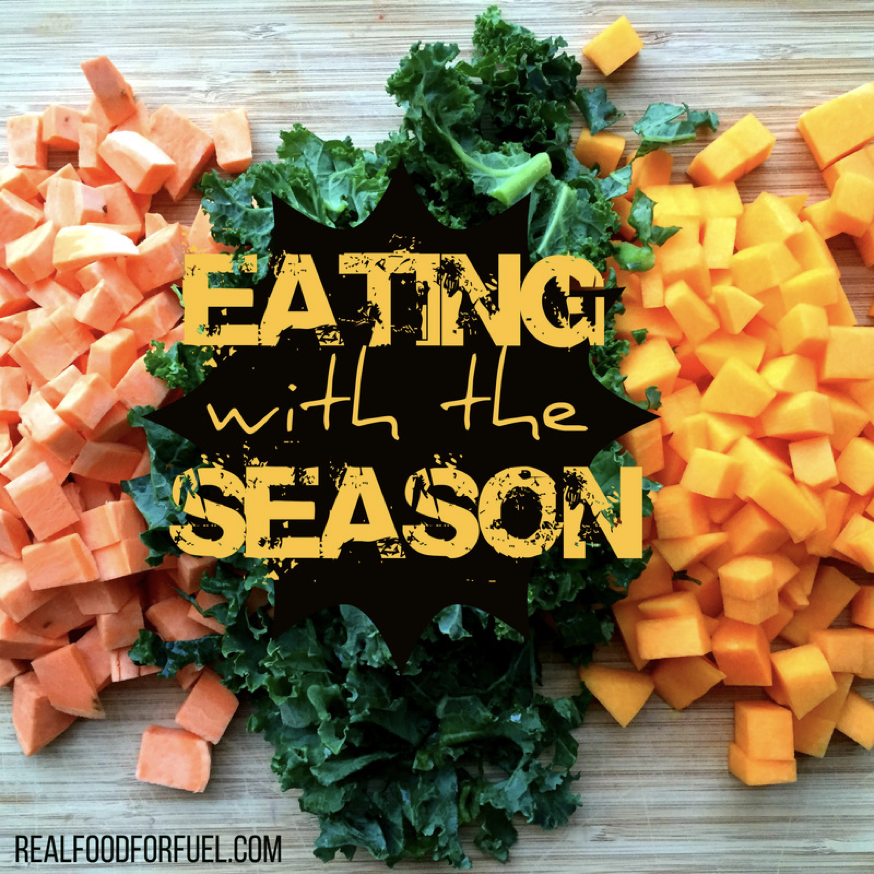
Back in the day, before it was possible to ship food all over the world, seasonal and local eating was all there was. But now, thanks to modern food processing and worldwide distribution channels, it's easy to forget about seasons and our local growers when we eat! With foods available year-round, grocery stores shelves look much the same in December as they do in July. As wonderful as it seems, year-round availability isn’t doing us much good. Lots of research shows seasonal eating is healthier. For instance, there are significant differences in the nutrient content of pasteurized milk in summer versus winter. Iodine is higher in the winter; beta-carotene and vitamin C are higher in the summer.
While seasonal menus can vary depending on where you live, there are some overriding principles you can follow to ensure optimal nourishment in every season:

In spring, focus on tender, leafy vegetables, including Swiss chard, spinach, Romaine lettuce, fresh parsley, and basil.
In summer, stick with light, cooling foods such as strawberries, apple, pear, and plum; vegetables like summer squash, broccoli, cauliflower, and corn; and spices and seasonings like peppermint and cilantro.
In fall, opt for the more warming, autumn harvest foods, including carrot, sweet potato, onions, and garlic. Also emphasize the more warming spices and seasonings including ginger, peppercorns, and mustard seeds.
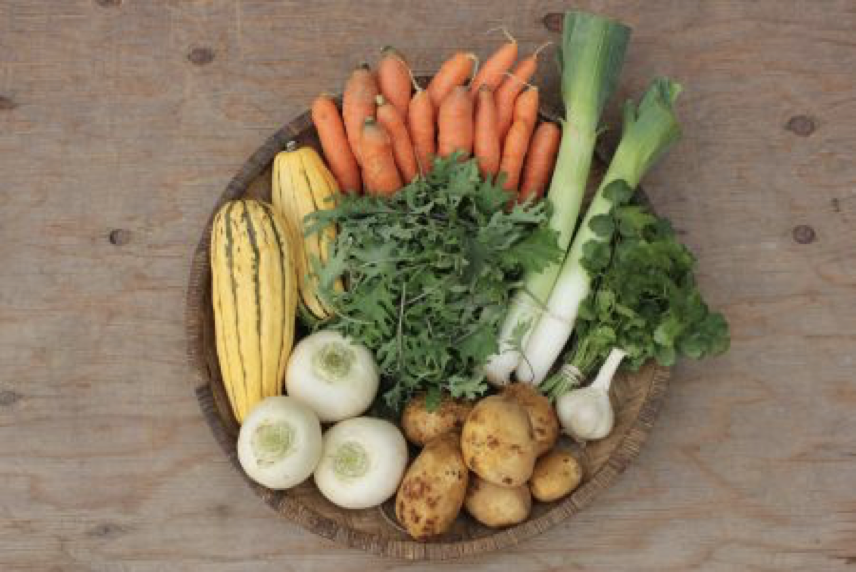
In winter, continue to plan meals around warming foods. The principle that foods taking longer to grow are generally more warming than foods that grow quickly is a good guide. All animal foods fall into the warming category including fish, chicken, beef, lamb, and venison. So do most of the root vegetables, including carrot, potato, onions, garlic, and the winter squash family. Eggs also fit in here, along with corn and nuts.
The bottom line? In all seasons, be creative! Let the natural backdrop of spring, summer, fall and winter be your inspiration.
All this said, let’s look at January. It can seem like a bleak month for fruit and vegetables, but it's actually teeming with choices.
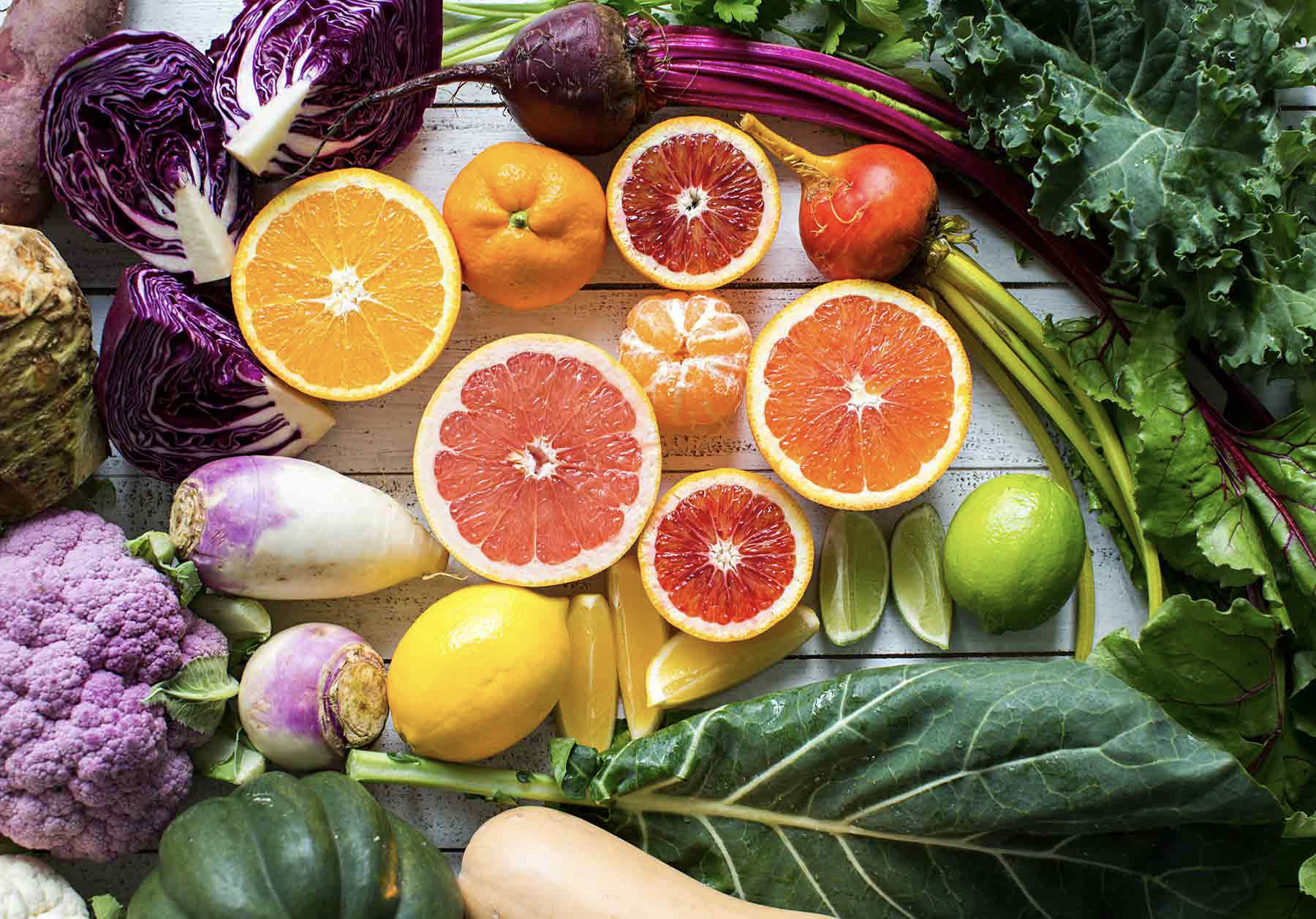
VEGETABLES:
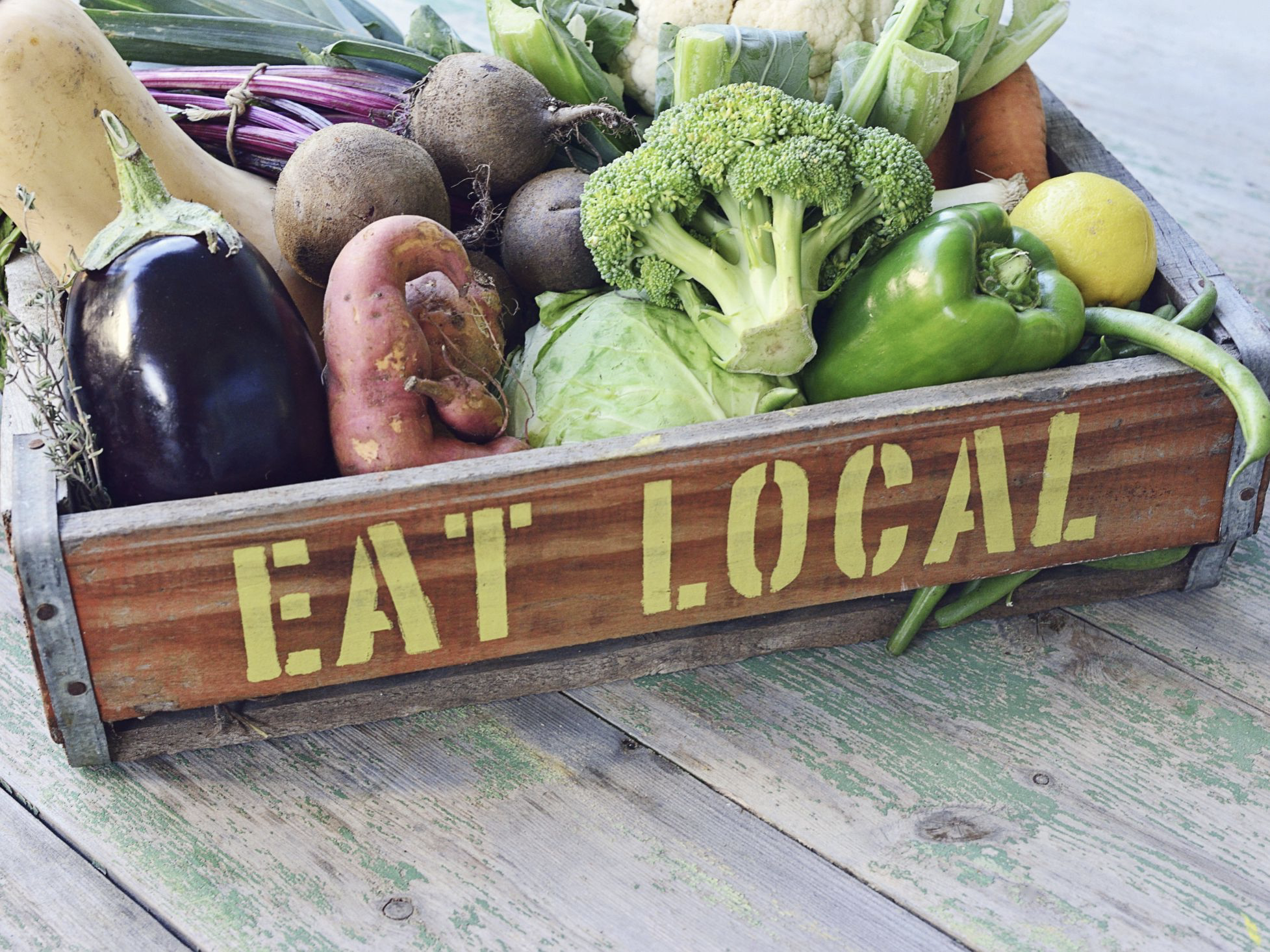
And the 2nd part? Eating locally grown food as much as possible. Even if changing your eating habits isn’t a priority, do consider buying local produce when it's available, rather than purchasing food that comes from 3000 miles away. Some resources for locating what’s in season in your area (US only) include:
Epicurious.com which provides a seasonal, interactive map for locating what's fresh in your area, plus finding ingredient descriptions, shopping guides, recipes, and tips related to what’s available.

The National Sustainable Agriculture Coalition, NSAC is an alliance of grassroots organizations that advocates for federal policy reform to advance the sustainability of agriculture, food systems, natural resources, and rural communities.
We’ve seen that the COVID-19 pandemic has disrupted our country’s food system from farm to fork, as well as the way individuals and families shop, purchase, and consume food. This transformation has brought with it a big uptick of interest in buying direct from local farmers, ranchers, and fishermen as a way to support struggling producers and ensure family food security.

So, to help the consumer find local food, NSAC is providing a national guide (listings of up-to-date websites, guides, and directories).
And then there’s FarmAid. Among several resources, they offer the EAT WELL GUIDE (a free online directory of family farms, restaurants, markets and other outlets of fresh, locally-grown food throughout the United States and Canada). Another of their search features is LOCAL HARVEST (a listing of farmers markets—winter markets also, family farms, and other sources of sustainably grown food in your area). They also include the USDA FARMERS MARKET SEARCH, where you can also find farmers markets by state and city.
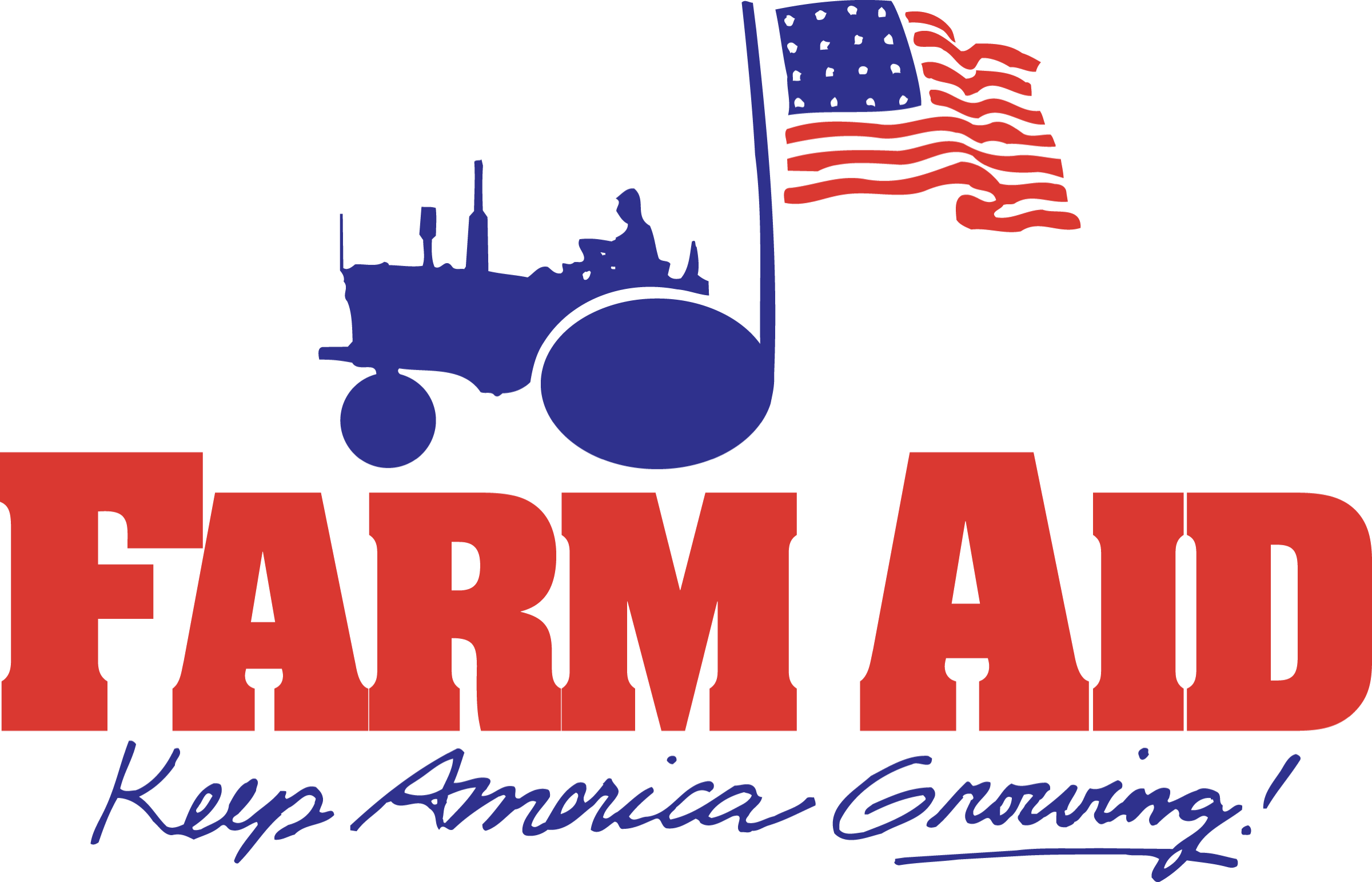
Lastly, SeasonalFoodGuide.org, tells what’s in season and available according to regions. You select a state, a month, and the type of produce you’re looking for. They offer a free, seasonal food app for your phone, as well as a free newsletter, Foodprint.
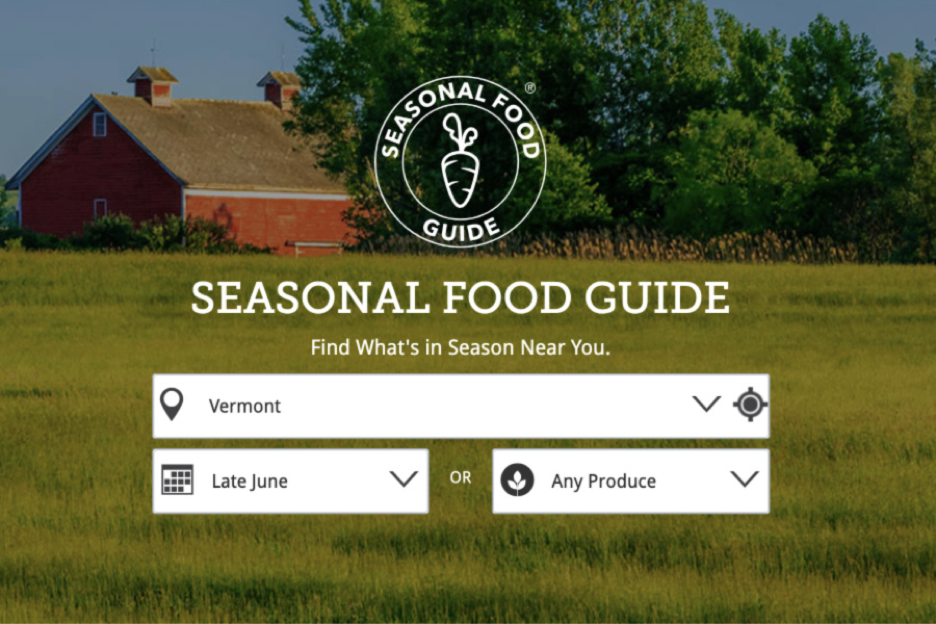
With all these helpful resources, why not seriously consider making a 2-part change in your buying patterns this year? Not only will you enjoy more nutrient-dense food, but you’ll be helping struggling producers and ensuring family food security!

Back in the day, before it was possible to ship food all over the world, seasonal and local eating was all there was. But now, thanks to modern food processing and worldwide distribution channels, it's easy to forget about seasons and our local growers when we eat! With foods available year-round, grocery stores shelves look much the same in December as they do in July. As wonderful as it seems, year-round availability isn’t doing us much good. Lots of research shows seasonal eating is healthier. For instance, there are significant differences in the nutrient content of pasteurized milk in summer versus winter. Iodine is higher in the winter; beta-carotene and vitamin C are higher in the summer.
While seasonal menus can vary depending on where you live, there are some overriding principles you can follow to ensure optimal nourishment in every season:

In spring, focus on tender, leafy vegetables, including Swiss chard, spinach, Romaine lettuce, fresh parsley, and basil.
In summer, stick with light, cooling foods such as strawberries, apple, pear, and plum; vegetables like summer squash, broccoli, cauliflower, and corn; and spices and seasonings like peppermint and cilantro.
In fall, opt for the more warming, autumn harvest foods, including carrot, sweet potato, onions, and garlic. Also emphasize the more warming spices and seasonings including ginger, peppercorns, and mustard seeds.

In winter, continue to plan meals around warming foods. The principle that foods taking longer to grow are generally more warming than foods that grow quickly is a good guide. All animal foods fall into the warming category including fish, chicken, beef, lamb, and venison. So do most of the root vegetables, including carrot, potato, onions, garlic, and the winter squash family. Eggs also fit in here, along with corn and nuts.
The bottom line? In all seasons, be creative! Let the natural backdrop of spring, summer, fall and winter be your inspiration.
All this said, let’s look at January. It can seem like a bleak month for fruit and vegetables, but it's actually teeming with choices.

VEGETABLES:
- Leeks
- Carrots
- Celeriac
- Celery
- Red cabbage
- Beetroot
- Brussels sprouts
- Cauliflower
- Chicory
- Jerusalem artichokes
- Kale
- Chard
- Parsnips
- Rutabaga (also known as swede)
- Winter cabbage
- Winter squashes
- Potatoes
- Blood oranges
- Pears
- Apples
- Clementines
- Lemons
- Oranges
- Passion fruit
- Pineapple
- Pomegranate
- Satsumas
- Tangerines
- Grapefruit
- Kiwi

And the 2nd part? Eating locally grown food as much as possible. Even if changing your eating habits isn’t a priority, do consider buying local produce when it's available, rather than purchasing food that comes from 3000 miles away. Some resources for locating what’s in season in your area (US only) include:
Epicurious.com which provides a seasonal, interactive map for locating what's fresh in your area, plus finding ingredient descriptions, shopping guides, recipes, and tips related to what’s available.

The National Sustainable Agriculture Coalition, NSAC is an alliance of grassroots organizations that advocates for federal policy reform to advance the sustainability of agriculture, food systems, natural resources, and rural communities.
We’ve seen that the COVID-19 pandemic has disrupted our country’s food system from farm to fork, as well as the way individuals and families shop, purchase, and consume food. This transformation has brought with it a big uptick of interest in buying direct from local farmers, ranchers, and fishermen as a way to support struggling producers and ensure family food security.

So, to help the consumer find local food, NSAC is providing a national guide (listings of up-to-date websites, guides, and directories).
And then there’s FarmAid. Among several resources, they offer the EAT WELL GUIDE (a free online directory of family farms, restaurants, markets and other outlets of fresh, locally-grown food throughout the United States and Canada). Another of their search features is LOCAL HARVEST (a listing of farmers markets—winter markets also, family farms, and other sources of sustainably grown food in your area). They also include the USDA FARMERS MARKET SEARCH, where you can also find farmers markets by state and city.

Lastly, SeasonalFoodGuide.org, tells what’s in season and available according to regions. You select a state, a month, and the type of produce you’re looking for. They offer a free, seasonal food app for your phone, as well as a free newsletter, Foodprint.

With all these helpful resources, why not seriously consider making a 2-part change in your buying patterns this year? Not only will you enjoy more nutrient-dense food, but you’ll be helping struggling producers and ensuring family food security!
Sources:
- www.realfoodforfuel.com
- www.naturesplus.com
- www.ripleyorganicfarm.com
- www.simplyrecipes.com
- www.thebalancesmb.com
- www.epicuriouskitchen.com
- www.linkedin.com
- www.farmaid.org
- www.coolmomeats.com
 Alice Osborne
Alice Osborne
Weekly Newsletter Contributor since 2006
Email the author! alice@dvo.com
